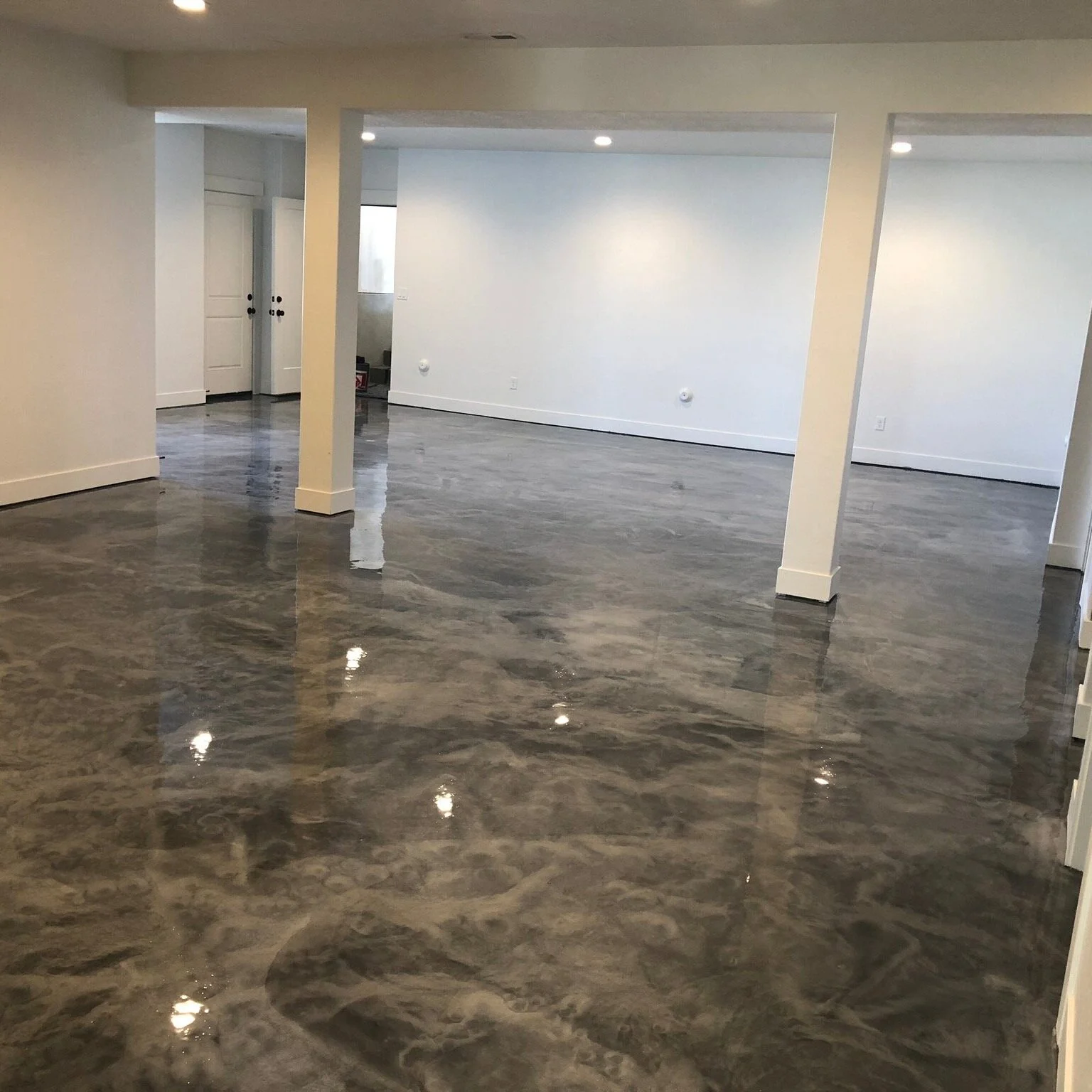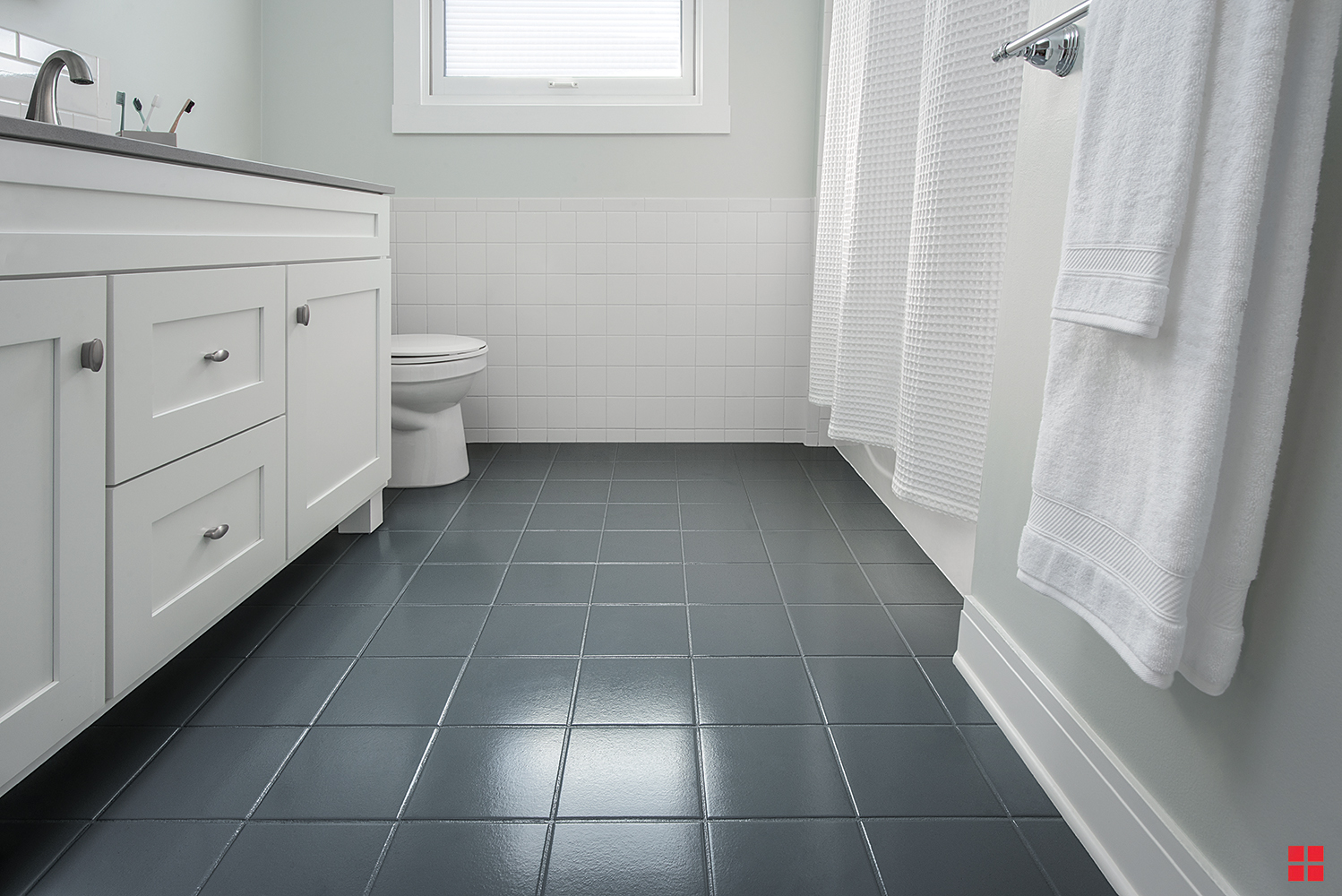Epoxy Floor Paint: Epoxy Floor Paint For Bathroom

Transforming your bathroom into a haven of style and functionality is a dream shared by many homeowners. While various flooring options exist, epoxy floor paint stands out as a remarkable solution, offering a blend of durability, aesthetics, and ease of maintenance. This versatile coating is specifically designed to withstand the demanding conditions of a bathroom environment, making it an ideal choice for both modern and traditional spaces.
Benefits of Epoxy Floor Paint in Bathrooms
Epoxy floor paint offers a multitude of benefits that make it a highly desirable flooring option for bathrooms. Its exceptional durability and water resistance make it a long-lasting and resilient choice, capable of withstanding the constant exposure to moisture, spills, and foot traffic. The smooth, non-porous surface of epoxy paint prevents the growth of mold and mildew, ensuring a hygienic and healthy environment. Furthermore, its seamless and easy-to-clean nature simplifies maintenance, reducing the time and effort required to keep your bathroom floor looking its best.
Epoxy Floor Paint Application
Applying epoxy floor paint in your bathroom is a rewarding project that can transform the look and durability of your space. This guide will walk you through each step of the process, from surface preparation to curing, ensuring a professional and long-lasting finish.
Surface Preparation
Before applying epoxy floor paint, thorough surface preparation is crucial for optimal adhesion and a long-lasting finish. This involves cleaning the surface, removing any existing coatings, and ensuring the floor is smooth and even.
- Remove Existing Coatings: If your bathroom floor has existing coatings like old paint, tile, or grout, you’ll need to remove them completely. This can be done using a scraper, wire brush, or chemical stripper, depending on the type of coating.
- Clean the Floor: Once the existing coatings are removed, thoroughly clean the floor with a degreaser or a strong cleaning solution to remove any dirt, grime, grease, or residue.
- Repair Cracks and Holes: Before applying epoxy, repair any cracks or holes in the floor using a patching compound or epoxy filler. Ensure the repairs are smooth and level with the rest of the floor.
- Sanding: Sand the floor with a coarse-grit sandpaper to create a rough surface for better adhesion. This is especially important for concrete floors.
- Vacuum and Dust: After sanding, thoroughly vacuum and dust the floor to remove any debris.
Primer Application
Applying a primer before epoxy coating is essential for creating a strong bond between the floor and the epoxy. This step enhances adhesion and ensures a smooth and even finish.
- Choose the Right Primer: Select a primer specifically designed for epoxy floor paint and compatible with the type of surface you are working with.
- Apply the Primer: Using a roller or brush, apply the primer evenly to the entire floor surface. Follow the manufacturer’s instructions regarding drying time and application thickness.
- Allow the Primer to Dry: Allow the primer to dry completely before proceeding to the next step. This ensures proper adhesion and prevents problems with the epoxy coating.
Epoxy Coating Application
Applying the epoxy coating is the heart of the project, transforming your bathroom floor with a durable and attractive finish. Follow these steps for a successful application:
- Mix the Epoxy: Carefully follow the manufacturer’s instructions for mixing the epoxy resin and hardener. Use the correct proportions and mix thoroughly to ensure proper curing.
- Apply the Epoxy: Using a roller or brush, apply the epoxy evenly to the primed floor surface. Work in sections, ensuring each section is covered smoothly and without gaps.
- Spread the Epoxy: After applying the epoxy, use a roller or squeegee to spread it evenly and eliminate any air bubbles. This ensures a smooth and consistent finish.
- Allow the Epoxy to Cure: Allow the epoxy to cure completely according to the manufacturer’s instructions. This typically takes 24-72 hours, depending on the type of epoxy and environmental conditions.
Curing Process
The curing process is crucial for achieving a durable and long-lasting epoxy floor. This involves allowing the epoxy to harden and reach its full strength.
- Avoid Foot Traffic: During the curing process, avoid any foot traffic on the epoxy floor to prevent damage or imperfections.
- Control Temperature and Humidity: Ensure the room temperature and humidity are within the recommended range specified by the manufacturer. This optimizes the curing process and prevents issues like cracking or bubbling.
- Proper Ventilation: Ensure proper ventilation during the curing process to allow any fumes to dissipate.
- Avoid Direct Sunlight: Protect the epoxy floor from direct sunlight during the curing process, as it can affect the curing process and potentially lead to discoloration.
Epoxy Floor Paint: Design and Customization Options
Epoxy floor paint is not limited to just providing a durable and protective coating for your bathroom floor. With its versatility, you can unleash your creativity and transform your bathroom into a personalized oasis.
Design Options for Epoxy Floor Paint
Epoxy floor paint offers a wide array of design options to enhance the aesthetics of your bathroom.
- Color Choices: You can choose from a vast spectrum of colors, from classic neutrals to bold and vibrant hues. Consider your bathroom’s overall theme and color scheme when selecting the epoxy color.
- Patterns: Epoxy floor paint allows you to create various patterns, adding visual interest to your bathroom floor. Geometric patterns, such as squares, triangles, and stripes, can create a modern and sophisticated look.
- Finishes: Epoxy floor paint is available in different finishes, including gloss, matte, and satin. Glossy finishes reflect light, creating a brighter and more spacious feel, while matte finishes offer a more subtle and understated look.
Creating Unique Designs
Beyond basic color and pattern choices, epoxy floor paint can be used to create unique and personalized designs.
- Geometric Patterns: Geometric patterns can be created using painter’s tape to section off areas and apply different colors of epoxy paint. You can create intricate designs with various geometric shapes and sizes.
- Marble Effects: Achieving a marble effect with epoxy floor paint involves using multiple colors and swirling techniques to create a natural-looking stone pattern.
- Decorative Accents: Epoxy floor paint can be used to create decorative accents, such as borders, medallions, or logos. You can use stencils or freehand techniques to achieve your desired design.
Examples of Epoxy Floor Paint Designs, Epoxy floor paint for bathroom
Here are some examples of how epoxy floor paint can enhance the aesthetics and functionality of a bathroom:
- A modern bathroom: A geometric pattern in black and white epoxy paint can create a striking contrast and a modern feel.
- A spa-like bathroom: A marble effect in soft, neutral colors can create a serene and relaxing atmosphere.
- A nautical-themed bathroom: A blue and white striped pattern can evoke a coastal vibe.


